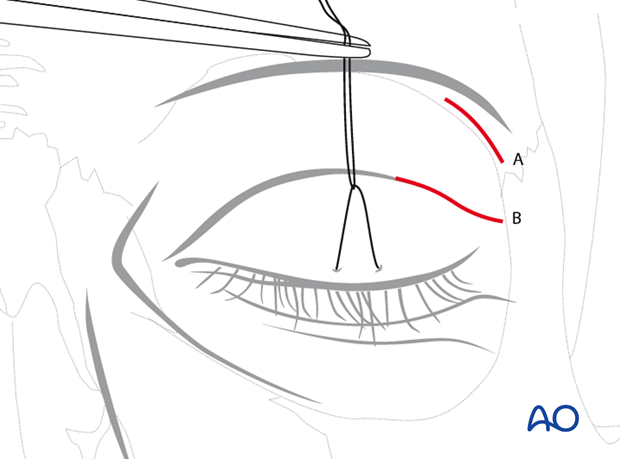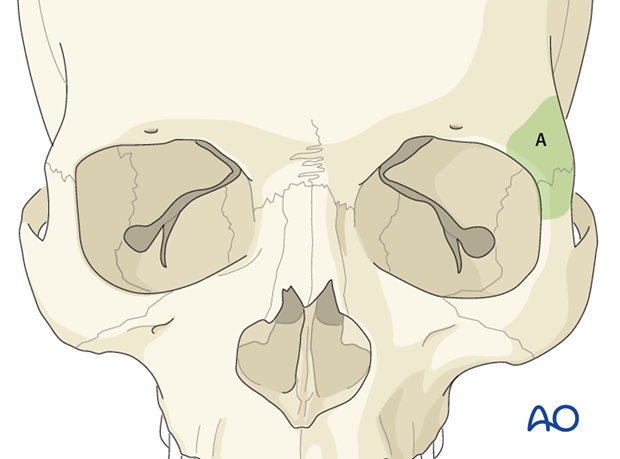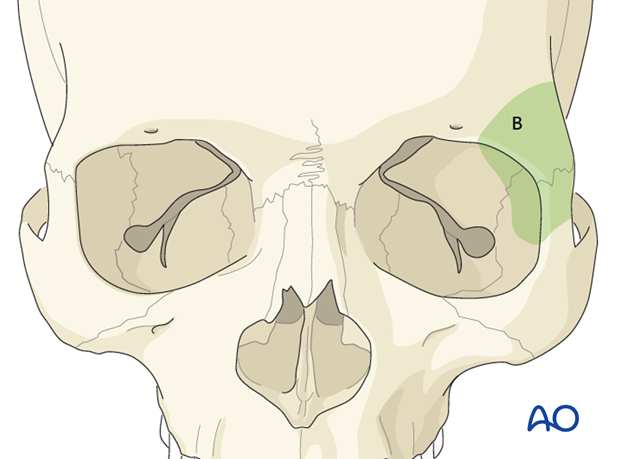Approaches to the superolateral orbital rim
1. Overview
There are two periorbital approaches to the superolateral rim of the orbit:
- Lateral eyebrow approach (supraorbital eyebrow approach, A)
- Upper-eyelid approach (upper blepharoplasty or supratarsal fold approach, B)
The appropriate choice of approach may vary, depending on tradition in different geographic areas.

2. Access area
The lateral eyebrow approach gives rather limited access to zygomaticofrontal process and the immediate vicinity of suture line (superolateral orbital rim).
The brow skin is thick and the wound edges are not very yielding to retraction but the overall skin mobility allows the shifting of the wound pocket over the bony surface, thus somewhat increasing the field of exposure by varying the traction vector. The entry into the superolateral internal orbit is very restricted and it is difficult to gain much exposure of the sphenozygomatic suture line. A lateral extension of the incision outside the brow to widen the approach will cause conspicuous scarring. Inferior extensions will cross the relaxed skin tension lines (RSTL).

The upper-eyelid or upper blepharoplasty approach offers greater versatility and enhanced accessibility to the superolateral rim compared to the lateral eyebrow approach. The soft tissues of the upper lid are thin, resilient, so that the incision site can be easily maneuvered onto the bony surfaces. In addition the incision can be extended laterally across the lateral orbital rim above the lateral canthus insertion without aesthetic drawbacks. Particularly the lower portion of the lateral rim is exposed more readily and the lateral orbital wall can be inspected more widely.
The upper eyelid in East Asian patients does not as readily lend itself to the use of the upper eyelid approach to the lateral orbital rim. In such patients, the lateral eyebrow approach may be a better surgical approach.

3. Link to detailed descriptions
Follow the links to read detailed step-by-step descriptions of the transconjunctival lower-eyelid approaches:
- Lateral eyebrow approach (supraorbital eyebrow approach, A)
- Upper-eyelid approach (upper blepharoplasty or supratarsal fold approach, B)













